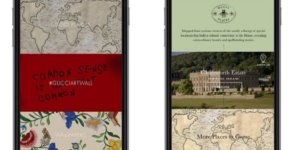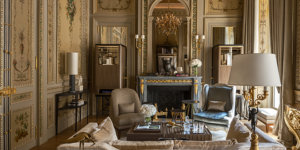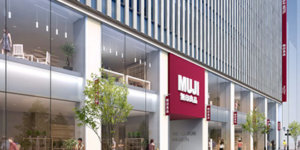Find Spirituality and Serenity in Ancient Luang Prabang
Communist-ruled since 1975, Laos has been slowly but surely opening up to luxury tourism. In sleepy Luang Prabang, age-old traditions continue to thrive, even as more people begin to discover the Jewel of the Mekong.

It’s 5.30am and we’re kneeling on the pavement just outside the main gate of the Amantaka resort, cradling woven wicker baskets warm with freshly-cooked sticky rice in our laps. Sunrise is minutes away. Soon, Luang Prabang’s saffron-robed monks will emerge from their temples and begin their daily procession along the streets of this sleepy town, and we will fill each of their bowls with alms – balls of sticky rice.
But this is not seen as an act of charity on our part. Rather, it’s a blessing from the monks that allows the giver to benefit spiritually from giving. Unfortunately, “some tourists put in biscuits, sweets, and even cigarettes”, says “Nit” Nithakhong Somsanit, Amantaka’s cultural advisor and a prominent activist in the preservation of Laotian traditions and arts.
“This is wrong. Tourism brings in income, but it is taking over our culture.”
Luang Prabang, the ancient capital of Laos and a UNESCO World Heritage site since 1995, is poised for a tourism boom. Arrivals are slated to increase by 16 per cent annually, and according to a 2015 report in The Laotian Times, an estimated 600,000 people visited the city in 2016. Singapore carrier Silk Air has increased the number of direct flights between Singapore and Laos – the only land-locked country in Southeast Asia. There are now three flights weekly to Luang Prabang from Singapore via Vientiane, and directly back to Singapore from Luang Prabang. Previously, only Lao Airlines served direct routes between the two.
Communist-ruled since 1975, Laos has been slowly but surely opening up to tourists as part of the Lao People’s Revolutionary Party’s move towards the Chinese model of market based authoritarianism. In day-to-day terms, the country is similar to Cuba – not so overtly communist, a little more free speech, and a healthy presence of socialist emblems on tourist T-shirts at various tourist markets.
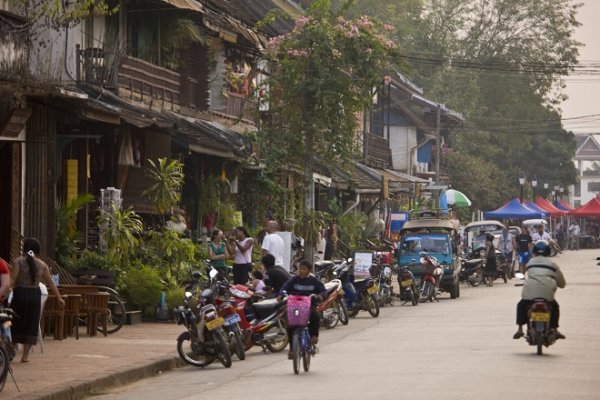
Save A Prayer
It’s easy to see why the city was once known as Muang Thong, the City of Gold. Its 30 golden-roofed, intricately carved temples (wats in Lao) gleam under the blazing tropical sky, amid charming French colonial villas – a legacy of French rule from the late 1800s to the mid-1950s – and traditional wooden Laotian homes.
Many of these wats are located in “downtown” Luang Prabang, a barely 1km stretch that runs parallel to the Mekong and consists of just four streets. Most of the wats are being restored, the ongoing work of the Buddhist Heritage Project and a race against time to save the city’s crumbling buildings and artefacts. Entry to the temples is usually about US$5, although a few are free.
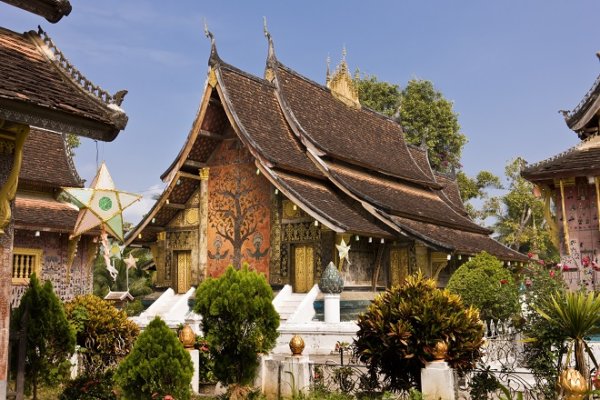
Wat Xieng Thong, Luang Prabang, Laos
Start with a 328-step climb up Mount Phousi (a steep hill, really) for a spectacular panorama of Luang Prabang, and a visit to That Chomsi, a small stupa at the summit that was built in 1804. Then descend and cross the street to explore the Wat Mai palace, built in 1788 and known for its glorious bas-relief work and golden stencilling in its sim (assembly hall). Next door is the Royal Palace, built by French colonialists circa 1904, a blend of Lao and French architecture with spartan living quarters and an over-the-top throne room – and a garage boasting a collection of vintage cars. And further down the Sisavangvong Road is Wat Xieng Thong, arguably the city’s most famous temple. Built in 1560, its exterior is encrusted in glittering coloured mirror shards that sparkle in the sunlight.
But for a special spiritual experience, attend the novice monks’ morning or evening prayers at the relatively austere Wat That Luang, where celebrities such as Antonio Banderas and Julia Roberts came to take part in rituals to re-centre themselves. The prayers are in Pali Sanskrit, not the Lao language. The monks learn to chant the rhythm of the words before they are taught the meaning of the sutras, says Nit. “You don’t need to understand the prayers, you have to feel it first, before you can learn the language.”
Slow Down
Any time you’re feeling “watted” out, take a stroll and explore the rest of Luang Prabang. Gentrification is everywhere you look. The old French villas have been repurposed into hotels like the the Sofitel-run 3 Nagas Luang Prabang with vintage cars parked outside, or Hôtel Sofitel Luang Prabang (in the former French governor’s residence, no less) off the main drag. Restaurants like L’Elephant and the picturesque Manda de Laos, set amidst three lotus ponds, which are also UNESCO protected, serve authentic French and Laotian food respectively. Touristy stores abound, but it’s the funky Ock Pop Tok, a guesthouse and Laos-based social enterprise offering modern iterations of traditional textiles and handicrafts that hipsters flock to. There’s a thriving coffee culture here, too. Saffron Coffee, a café by the Mekong River, leads the way with smooth, elegant brews from beans grown in the Lao countryside. And Le Banneton, along the main downtown strip, is famed for its traditional French pastries.
What strikes me most here in this dusty little town is just how neat and clean everything is, from the stacks of red plastic chairs outside a provision shop to the street hawkers’ mise en place at the night bazaar, where local souvenirs such as textiles and jewellery are peddled – and unlike in other Southeast Asian night markets, you won’t get hassled if you’re not interested.
The UNESCO label is a blessing and a curse, according to Nit, a royal family member who fled Laos when the communists took over. He spent 30 years in Europe and the US, but returned to Luang Prabang in 2002, concerned about the erosion of Laotian culture. “The challenge is not to see royalty as the enemy, but as guardians of the culture.”
A River Runs Through
It There’s a French saying about Indo-China: “The Vietnamese plant the rice, the Cambodians watch the rice grow – and the Lao listen to it grow.” Laotians are famously laidback, a result of their belief in Theravada Buddhism, to which 80 per cent of Laos subscribe, that emphasises the cooling of passions; strong emotions are taboo. Religion is a balm here and advancement is a matter of spiritual rather than financial accumulation.
And in the hill tribe villages just 30 minutes out of town, progress is selective and age-old traditions are adhered to. There is electricity and running water in both the poorer Khmut and more progressive Hmong villages, but houses typically have dirt floors, squat toilets are the norm, and women cook over wood fires. Teenagers tend to marry at 16 and women are mothers of up to six children by their early 30s.
But the sense of community is palpable in these villages, where the way of life hasn’t changed much for hundreds of years.
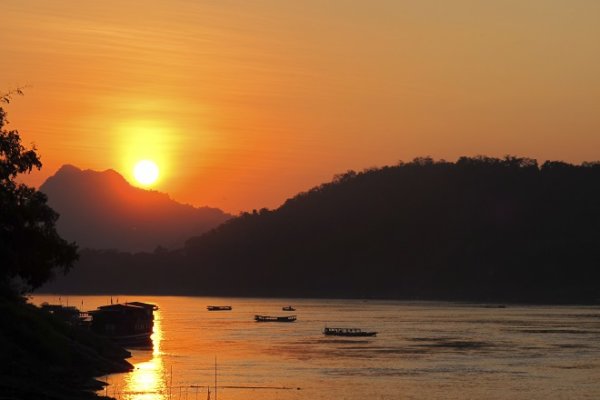
But whether it’s in the “city” or upcountry, the Mekong is considered Luang Prabang’s life force. A sunset cruise aboard an Amantaka boat along this mighty river is awe-inspiring, seeing how life unfolds on one side while untamed, rugged forests thrive on the other – and in the distance, misty mountains loom over this little town.
Buddhism in Laos is also often closely tied to animist beliefs and ancestral worship, especially in rural areas. We take part in a baci blessing ceremony, also known as a “sou khuan” or “spirit enhancing” ritual. A shaman and monks chant prayers while we hold on to white cotton strings that unravel from a centrepiece with, amongst other things, dried spices and marigolds. At the end of the prayers, the shaman ties around your wrist at the end of the ceremony; it is believed that you should wear the bracelets for luck and protection for at least three days after, or until they fray and eventually fall off. Cutting off the bracelets is considered bad luck.
In this respect, Luang Prabang is not much different from other Southeast Asian cities in its melding of age-old religious practices with 21stcentury life. But Nit has another take: “Our architectural treasures needed the protection the UNESCO designation would bring. We now have that protection – but the real treasure of Luang Prabang is its people and their cultural heritage.
Check In, Chill Out
With its overhead fans, green shutters, wicker couches, and shady verandas, the Amantaka resort could have been the perfect setting for a Graham Greene novel. Built in the 1920s, this cluster of French Colonial buildings was originally a hospital. Today, this quiet haven just off downtown Luang Prabang is a UNESO World Heritage site, bordered by high walls and lush mango and frangipani trees.
Stay in one of 24 palatial villas here, all with four-poster beds, huge bathtubs, and private pools. In the mornings, the main swimming pool is an oasis of calm. Come the afternoon, relax in the library or have a massage at the Aman spa. Fitness buffs can hit the tennis court, gym or meditation and yoga centre.
Or rent an Aman bicycle and explore Luang Prabang on two wheels: Mount Phousi, the Night Market, and Mekong River are just minutes away. Another must is the sunset cruise down the Mekong River.
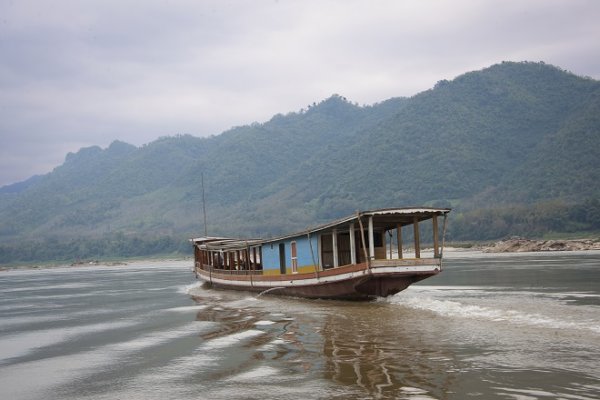
Words by Sharon Lim.
From: Men’s Folio, Jun/July 2017.




